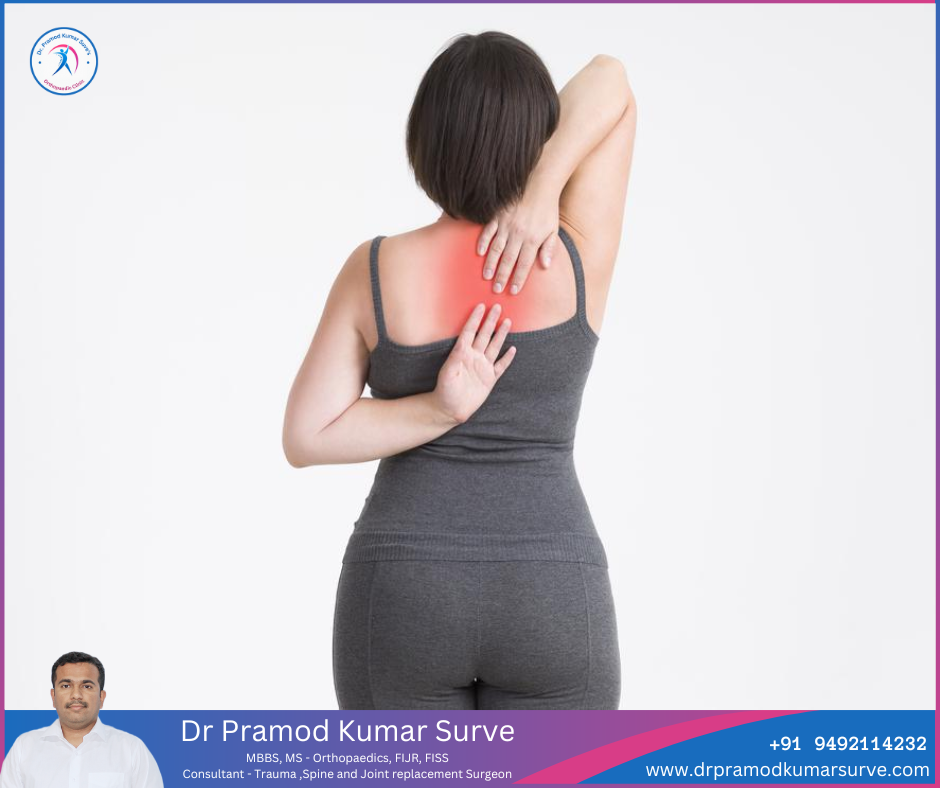1. MUSCLE SPRAIN OR STRAIN
An interlocking network of ligaments, muscles, and tendons surrounds the spine. An injury to a ligament results in a sprain, while strains occur when a muscle or tendon is torn or stretched too far. These types of injuries often happen when you lift heavy objects without following the proper form. To avoid sprains and strains, be sure to bend your knees and carry the weight close to your body.
2. HERNIATED DISC
Intervertebral discs in the middle back may become herniated when the cartilage cushioning the disc ruptures. Without a buffer, the vertebrae brush against each other, causing severe nerve pain. Sometimes called a slipped disc, this condition stems from either a traumatic injury or simply wear and tear over time. Conservative treatment options include physical therapy and steroid injections. If those methods fail to alleviate chronic middle back pain, surgery to remove or trim the damaged disc may be recommended.
3. OSTEOARTHRITIS
As we age, the cartilage enclosing our joints breaks down, which can lead to osteoarthritis. Without this protective cartilage, the resulting friction causes pain and limits middle back movement. Thankfully, anti-inflammatory medications and exercises to improve muscle flexibility and strength can ease the symptoms of osteoarthritis.
4. VERTEBRAE FRACTURE
A vertebrae compression fracture may result if the bones in your middle back degenerate to the point where the vertebrae press together painfully. Older women who suffer from osteoporosis are more susceptible to fractures as their bones weaken with age. Compression vertebrae fractures are typically treated with pain medication, back braces, and physical therapy. If conservative options do not bring relief, surgery to stabilize the collapsed vertebrae may be an effective treatment.
5. POOR POSTURE
Your posture has a tremendous impact on your middle back health. Hunching over your desk for hours strains your back muscles, as they have to work harder to support your shoulders and neck. To prevent chronic middle back pain, sit up straight at your desk, with your feet flat on the floor. Move your shoulders back as far as you can, and then rotate them a third of the way forward to find your ideal position. As you sit, roll and lift your shoulders frequently to loosen middle back muscles.
In general, strengthening exercises and stretching before and after physical activity go a long way in keeping your thoracic spine healthy. However, if the pain in your middle back persists, it may be time to consult an orthopedic specialist. The doctors and physical therapists at New York Bone & Joint Specialists offer a wide array of surgical and non-surgical options to treat your aching back. Book an appointment today to begin your road to recovery.
